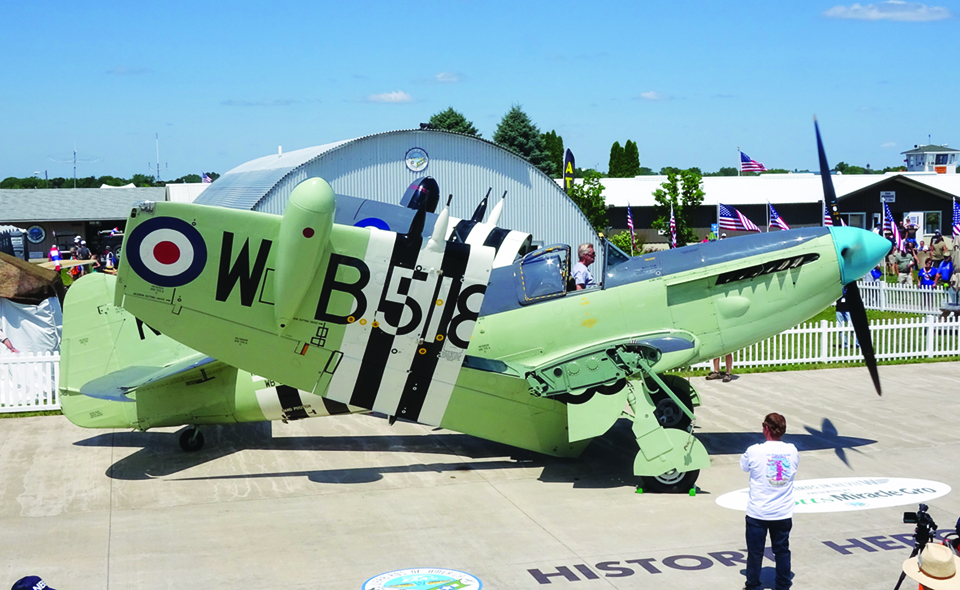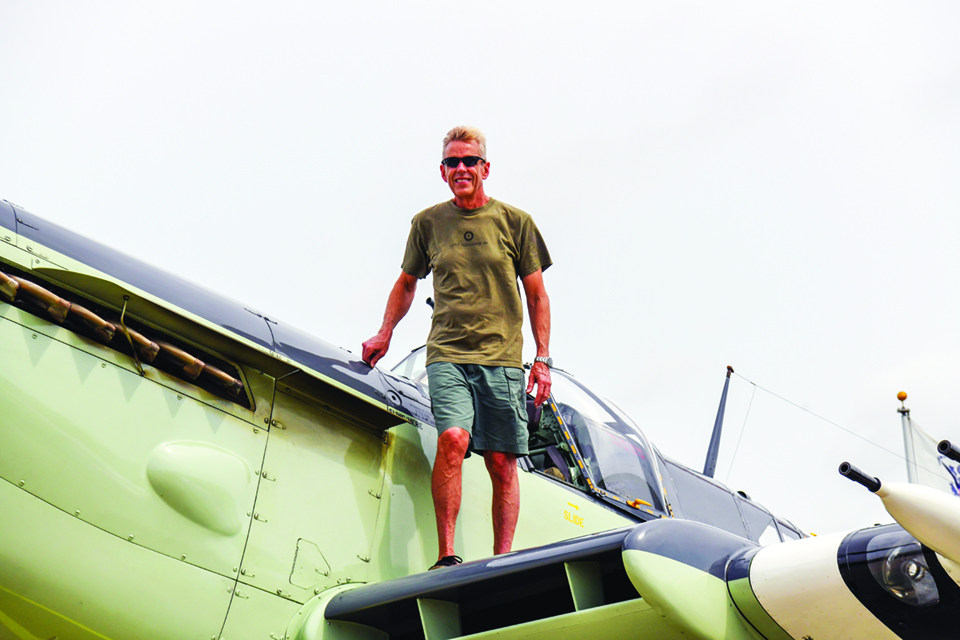Shining, Not Glowing
By Frederick A. Johnsen
July 26, 2019 - Not all the fireflies in Oshkosh skies this summer are luminescent insects. EAA AirVenture 2019 features a Fairey Firefly fighter, a British development that first saw service in World War II aboard Royal Navy aircraft carriers. The Firefly embraced the prewar concept of a reconnaissance fighter with a pilot and navigator/weapons officer sitting in tandem.
AirVenture visitors who attended Monday afternoon's Warbirds in Review session had a rare treat as the Firefly's huge Griffon engine was started by pilot/owner Eddie Kurdziel, who then demonstrated the aircraft's unique flap system and wing folding mechanism. The staccato exhaust of the Griffon grew to a raspy roar for the crowd's appreciation.
Eddie said the Griffon packs 1,000 more cubic inches in its cylinder displacement than its relative, the famous Merlin. "It's more durable than a Merlin," he added. Vintage V-12s, the go-to rebuilder of liquid-cooled warbird engines located in Tehachapi, California, rebuilt the Griffon for Eddie's Firefly. Griffon parts are understandably scarce, and Eddie traveled to Cyprus to follow a tip that led him to 52 boxes of Griffon engine heads and banks.
The prop spinner and cowling came from a defunct bar in Australia. And the airframe is a composite from an Australian Firefly that spent four decades on a pole. Eddie said, "It was a big bird house." The wings and tail came from another Firefly. "I traveled all over the world to find things," he said of the multi-year restoration effort.
He figures 45,000 man-hours went into its completion, and he credits Q.G. Aviation of Fort Collins, Colorado, with the result. Asked how much the restoration project cost, Eddie shied away from a direct dollar amount, then smiled and said, "It's a couple Mustangs' worth … good Mustangs."
He said the Firefly "flies kind of like an underpowered jet. It's a big airplane." He added, "It's a pretty honest airplane; it's just a big machine." An astute observer will note the Firefly's huge propeller rotates in the opposite direction of typical American fighters. Quirky, maybe — but it may have saved some naval aviators who got too slow in the left-hand pattern as they approached the carrier deck. An American fighter nearing a stall would roll tighter to the left if too much power was applied, often with disastrous results. The Firefly in similar circumstances torque rolls to the right. Might not be pretty, but it could afford the aviator a chance to recover. All that torque is linked to a four-blade propeller with a diameter of 14 feet, 9 inches, said to be the largest diameter of any British fighter.
The Firefly could carry bombs in addition to its four 20mm cannons. Though it lacked the speed of contemporary cutting-edge fighter aircraft, the Firefly proved to be a durable workhorse. If its fighter mission was quickly superseded by faster single-seat warplanes, the Firefly stayed in the fight as a ground attack and anti-submarine warfare machine before ending its service as a target tug and occasionally a drone.
The Firefly at AirVenture wears the paint scheme it carried when it served during the Korean War. This Firefly may not glow in the dark, but shines by day.


